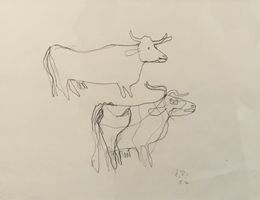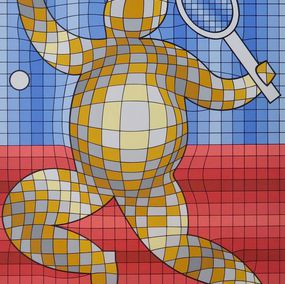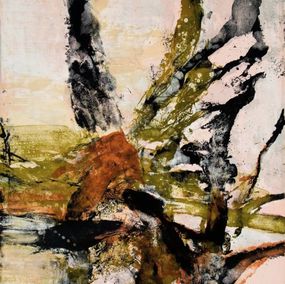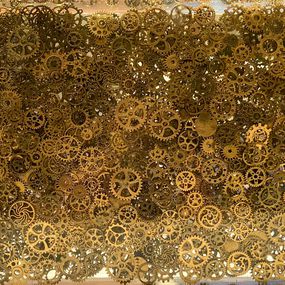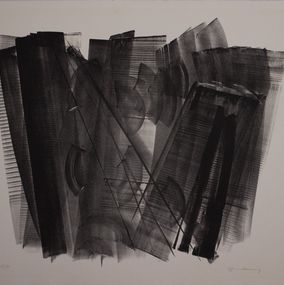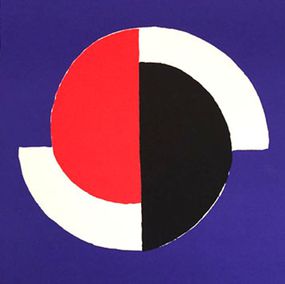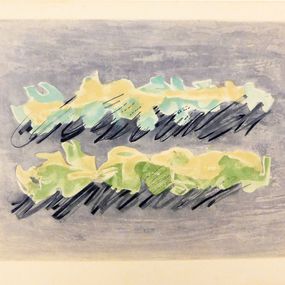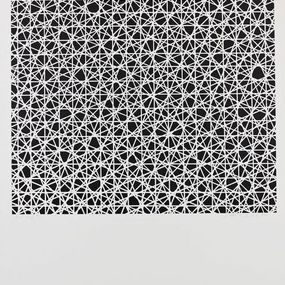
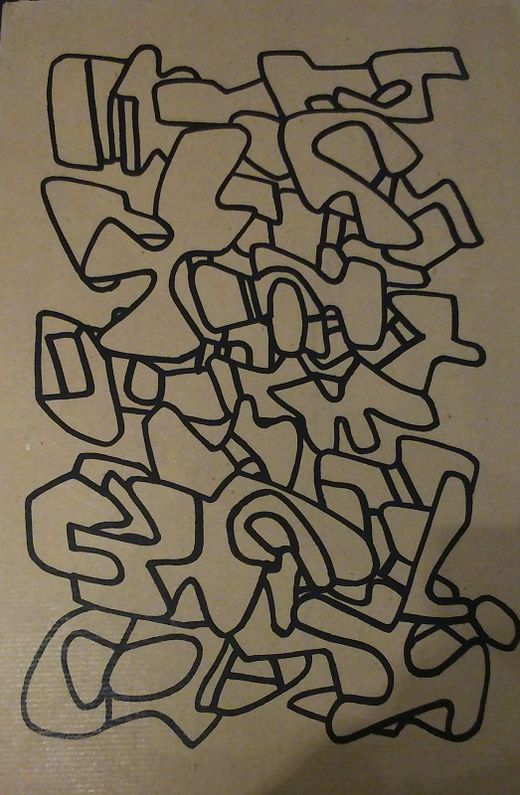
Art does not lie down in the beds that have been made for it; it runs away as soon as its name is uttered: what it loves is anonymity.
Biography
Jean Dubuffet was born in Le Havre on 31 July 1901 into a family of wine merchants. A paradox marked his life: fascinated by the fringes of society and madness, he could never be able to give up the privileges offered by his fortune even though he despised the bourgeois and the intellectuals. One of the most important French painters of the 20th century, Jean Dubuffet was the first to coin the term Art brut, to label the art of outsiders with no artistic education.
After a short stint at the Académie Julian in 1918, he established his studio in a building owned by his family's business. Eventually, he joined his father's business but took numerous breaks to travel and to work in other cultural fields, always self-taught: painting, literature, languages, music.
His real artistic career began in his forties: for the next four decades, he built a rich body of work, wrote essays and poetry, played jazz, and experimented with different materials and techniques. In his first series of paintings, Rues de Paris, Hautes Pâtes, Mirobolus, Macadam et Compagnie, he stated his desire to stay away from schools and art movements, advocating for spontaneity of the artistic gesture, instinct and the use of "low" materials, such as sand or tar.
He first used the term art brut in 1945 to define the spontaneous and primitive productions of outsiders or the mentally ill, works that he had been collecting, but also to define his own work. In 1948, he created the Compagnie de l'art brut with André Breton, Jean Paulhan, and Michel Tapié, whose goal was to study and disseminate this involuntary art. He produced multiple series: Sols et terrains, Paysages du mental, the famous Tableaux d'assemblages. He was attracted by the grotesque and wanted his work to offset viewers, like a "punch to the gut". He painted for his own enjoyment and has little interest in other painters.
Between 1962 and 1983, he worked on the Hourloupe cycle. He produced paintings, drawings, assemblages, sculptures, “praticables", architectural pieces in three essential colors: red, blue, and white. The “praticables" are animated paintings mainly assembled under the name Coucou Bazar, a work bridging painting, sculpture, dance, and performance. First presented in New York in 1973, Coucou Bazar came to life more recently in 2013 at the Musée des Arts Décoratifs in Paris and in 2016 at the Fondation Beyeler in Basel, Switzerland.
Today, his works continue to be exhibited in the world's greatest museums. In 2019 the MUCEM in Marseille presents his exhibition "Jean Dubuffet, a barbarian in Europe" and another major exhibition of his works is held at the Palazzo Franchetti in Venice.
Nationality
Categories
Artistic movements
Themes





